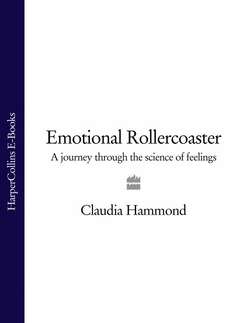Читать книгу Emotional Rollercoaster: A Journey Through the Science of Feelings - Claudia Hammond - Страница 15
the route to a happier life?
ОглавлениеWhile research on positive emotions has increased in recent years and the subject has begun to be taken more seriously, the question remains of whether research on happiness can in reality help us to experience this emotion more often. It’s not hard to improve mood in a laboratory. Show people a film of penguins waddling, playing and sliding on the ice and soon everyone feels a bit better. Lying in a flotation tank, singing out loud or listening to stirring music can all lift mood temporarily, but the late social psychologist Michael Argyle wanted to know what gives people lasting happiness. After years spent researching the subject he concluded that the answers lay in attending church, joining sports clubs and watching soap operas. His analyses showed that on average the people who did these activities were the happiest. All three pastimes share both a sense of belonging and of social occasion; even identifying with the characters in a soap opera can induce feelings of belonging in a way that most other TV programmes can’t. In fact, Argyle found that people who watched a lot of television were more unhappy than average. This could be a reflection of the situation which led them to have so much time to spare at home; maybe they were more likely to be unemployed, isolated or unable to afford to go out. Although the people attending church or sports clubs were the happiest, they had of course chosen to join these groups. The research doesn’t demonstrate that if everyone joined they would be happier. If you like neither sport nor religion it could make you more unhappy. When I met Michael Argyle a couple of years before he died his tip for a happier life was simple – to go for brisk ten-minute walk twice a day. People reported feeling better for two hours afterwards, so potentially two walks a day could result in four hours of uplifted mood.
The simple idea of planning activities with the aim of improving mood has been used therapeutically. Unhappy people were asked to keep daily records of both their activities and their moods. Then the lists were analysed to find out what made them happiest and these activities were then incorporated more frequently into their routine. It transpired that people weren’t in fact doing their favourite activities very often, but when they did they felt happier.
However, unfortunately for people who are unhappy, Michael Argyle found that people were relatively stable in their degree of happiness, regardless of what happened to them. A happy person suffering a misfortune might feel temporarily less happy than they were before, but that could still be happier than many people feel despite their lives apparently having gone well. Finding it easy to get on with people and taking exercise were also strong predictors of people’s happiness levels. As for money, becoming richer only makes people happier if the amounts are substantially higher than their expectations of earnings. With all these studies, however, there is the issue of exactly what people mean by happiness when they are filling out a questionnaire. Are they talking about moments of joy or an overall state of happiness? Why is it, for example, that five times as many Norwegians claim to be happy than Italians? Can the differences really be that extreme or are people interpreting the questions differently? Some researchers try looking at the reverse. Rather than measuring how happy people claim to be, they look to see which countries have the fewest suicides, but of course a low suicide rate only tells us that few people are suicidal, not that everybody else is happy.
Joy is perhaps a rather unfair emotion because it is biased towards those who already feel happy. Happy people are better at coping with distressing events; they are more attractive to others; and they find it easy to conjure up happy memories. Moreover, because they feel happy they smile more, sending them on an upward spiral of happiness which, through facial feedback, might reinforce their good mood every time they smile. Meanwhile those who could benefit the most from that extra fillip granted by smiling, aren’t smiling because they feel sad, left on a downward spiral with unhappy memories foremost in their minds. From this perspective it’s hard to see how sadness could possibly be functional, but as we shall see in the next chapter even sadness has its place.
